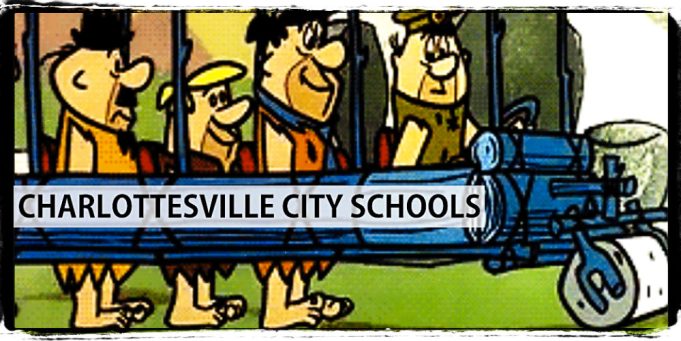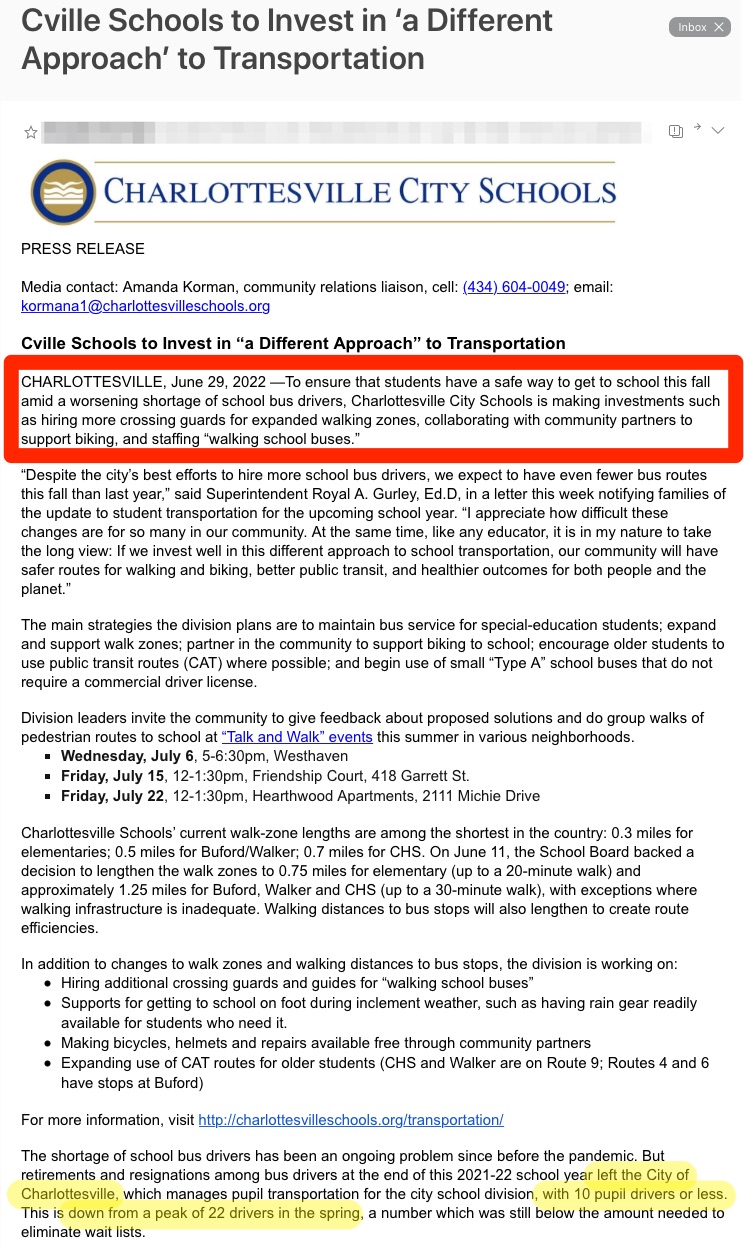Facing a drastic shortage of school bus drivers, Charlottesville City Schools (CCS) has found prehistoric inspiration in the Flintstone-esque concept of “walking school busses.”
In a bizarre press release, CCS Superintendent, Royal Gurley, laments the division’s lack of available bus drivers (“less than 10”) and previews the Schools’ backup plans:
Charlottesville Schools’ current walk-zone lengths are among the shortest in the country: 0.3 miles for elementaries; 0.5 miles for Buford/Walker; 0.7 miles for CHS. On June 11, the School Board backed a decision to lengthen the walk zones to 0.75 miles for elementary (up to a 20-minute walk) and approximately 1.25 miles for Buford, Walker and CHS (up to a 30-minute walk), with exceptions where walking infrastructure is inadequate. Walking distances to bus stops will also lengthen to create route efficiencies.
In addition to changes to walk zones and walking distances to bus stops, the division is working on:
-
Hiring additional crossing guards and guides for “walking school buses”
-
Supports for getting to school on foot during inclement weather, such as having rain gear readily available for students who need it.
-
Making bicycles, helmets and repairs available free through community partners
-
Expanding use of CAT routes for older students (CHS and Walker are on Route 9; Routes 4 and 6 have stops at Buford)
Gurley attempts to put “lipstick on the pig” by promoting the benefits of too few drivers:
If we invest well in this different approach to school transportation, our community will have safer routes for walking and biking, better public transit, and healthier outcomes for both people and the planet.”
The Superintendent’s overly rosy assessment is belied by the fact that most parents—who no longer have the option to “bus” their children to Charlottesville government schools—will instead drive them there, leading to less exercised kids and greater environmental impact.








